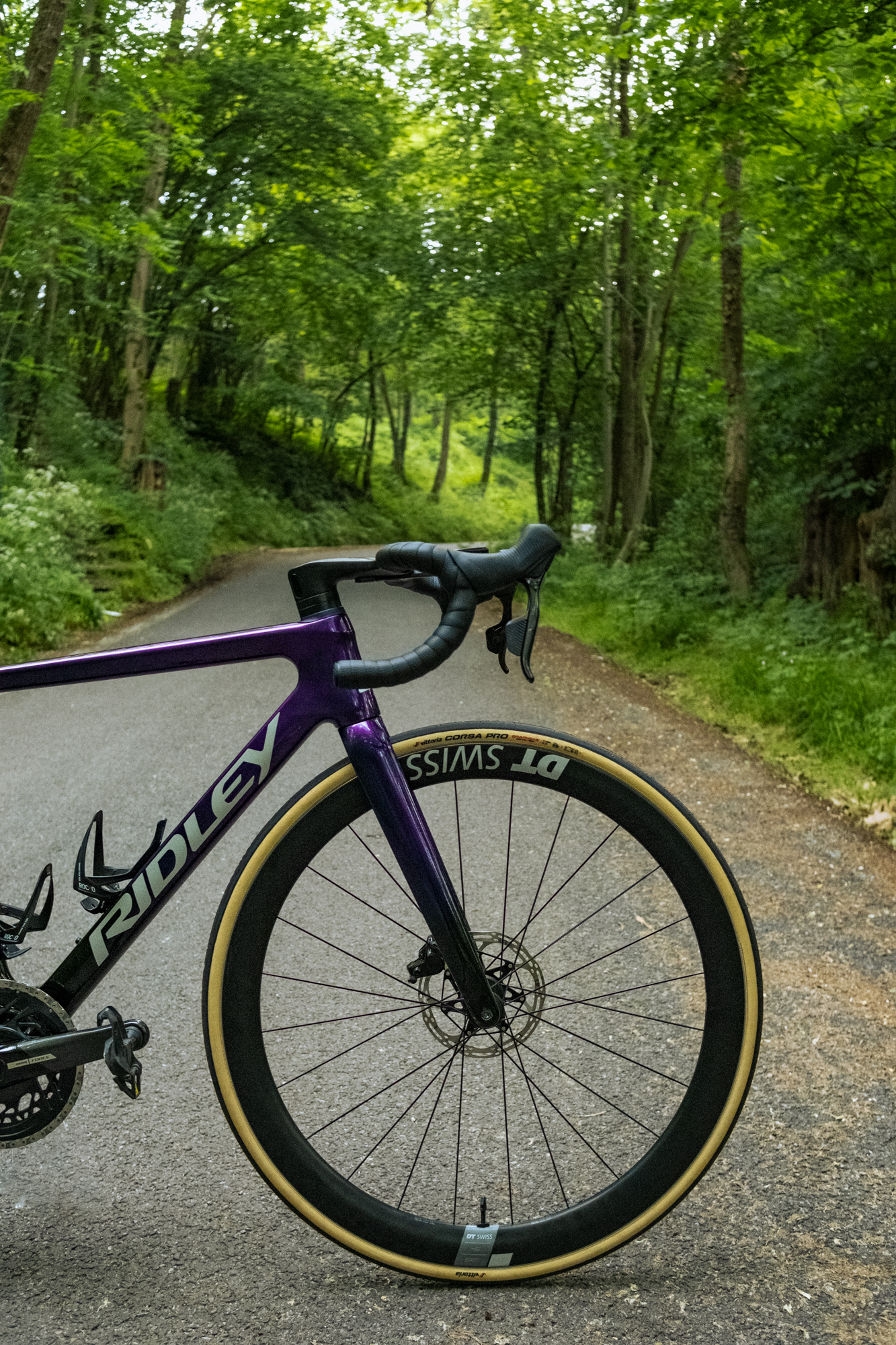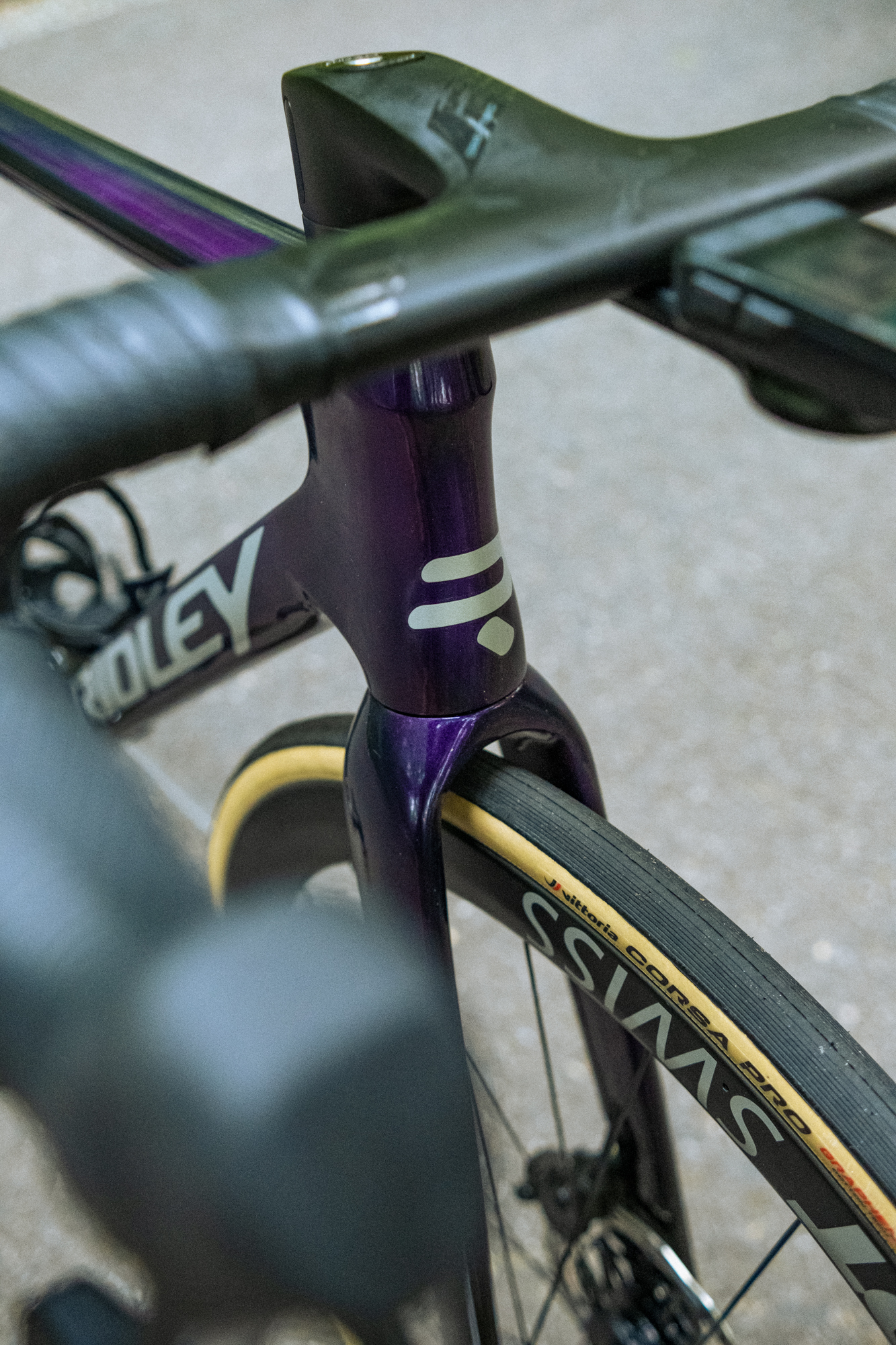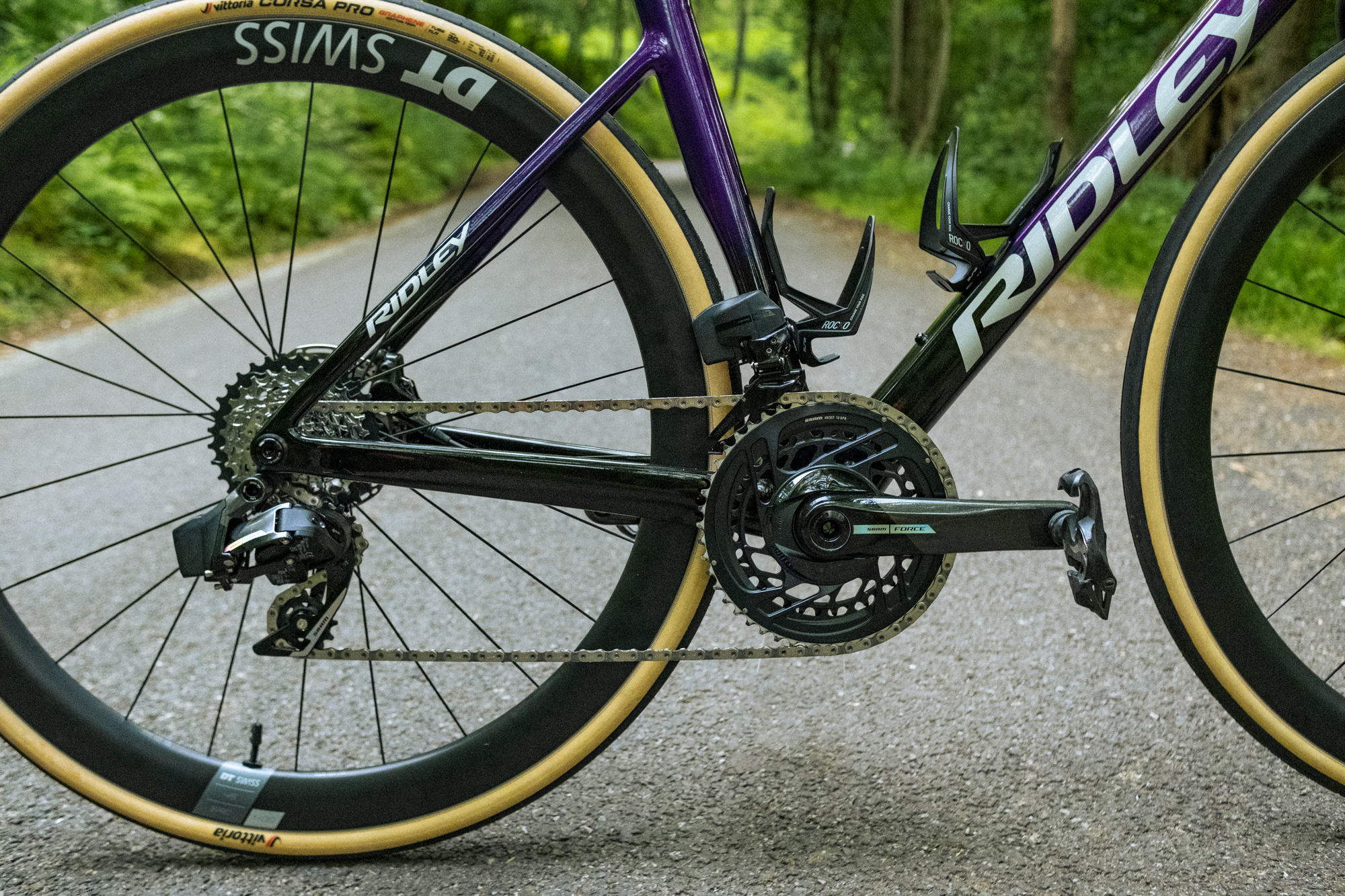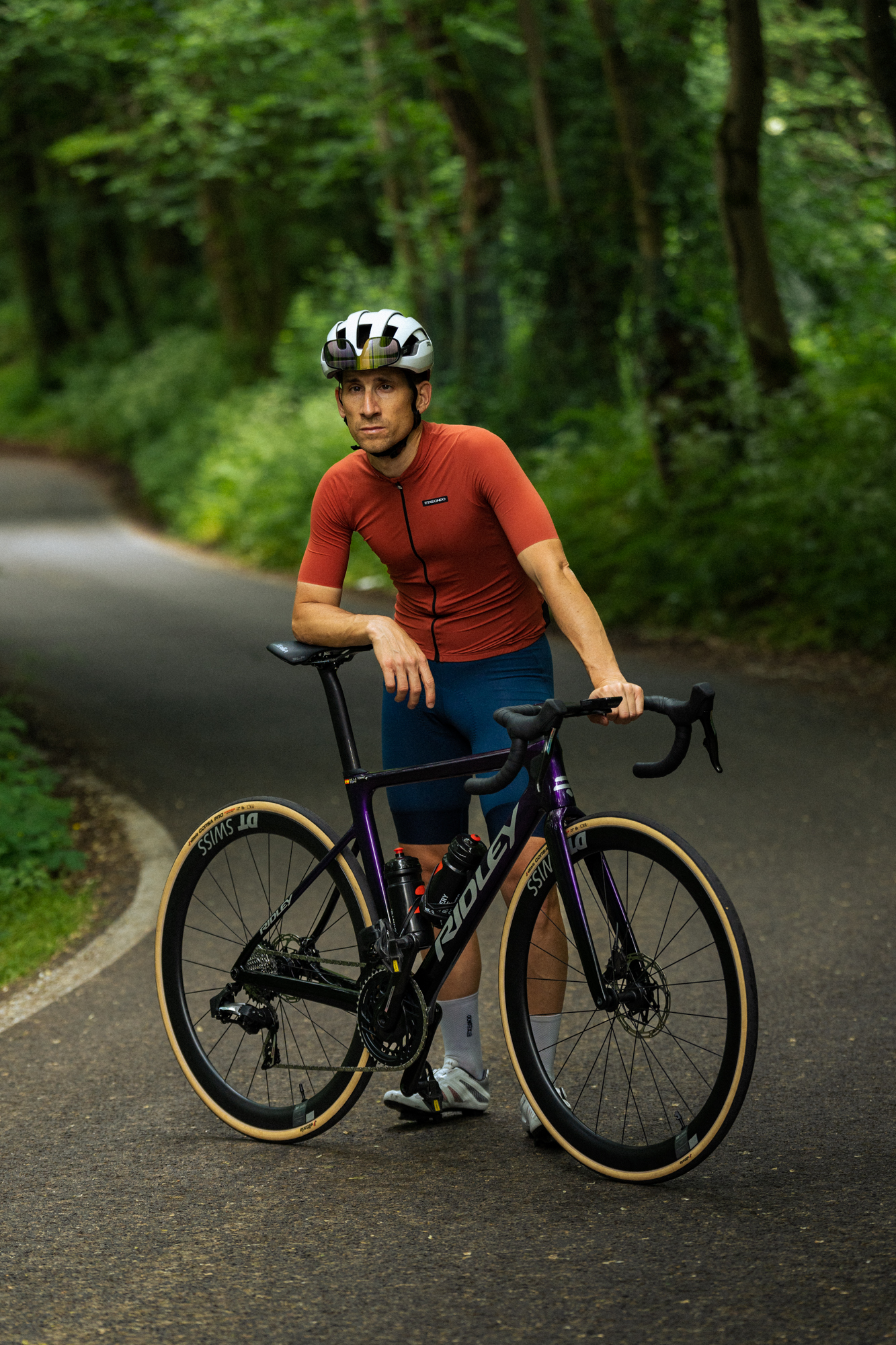By the end of May, we had the opportunity to travel to Lake Como, Italy, along with other media and part of the Ridley Bikes team to test their new road model. A long-awaited bicycle in which the brand has put a lot of effort and dedication. Although it is true that during our visit to the brand’s factory at the beginning of the year we were already able to see an exclusive prototype, this time we were more fortunate and we saw the bike in its final version. During these days, we learned the whole manufacturing process, geometry details, technical specifications, and, most importantly, we thoroughly tested it.
This new model, named Ridley FALCN RS, was born from the objective of designing a bicycle with the ideal balance between aerodynamics and lightness, without sacrificing performance or comfort.
Concept Aero-to-weight
During the official presentation to the press, the Belgian brand surprised us with a new concept to define this bicycle model, called Aero-to-Weight. A commitment by Ridley to seek the best possible performance by introducing those aerodynamic aspects that provide essential benefits and do not excessively affect the final weight of the bicycle.
According to Bert Kenens, product manager of Belgian Cycling Factory, the design process for the new FALCN RS focused on creating a bike that was light and stiff enough to be good on the most demanding climbs and, at the same time, have a good aerodynamic base that allows it to be fast on the flats and descents.
To achieve this, they have invested a large number of hours analyzing data obtained in the wind tunnel, tests, changes, new designs, and more tests until they arrive at the bike that they present to us today. The result? A frame of only 825 grams (size M) and a 380-gram fork give shape to a geometry with which Ridley claims to have found the perfect balance between speed, stability, and reactivity.
Detail view
If we go to the more technical aspects, the new FALCN RS has some improvements that we believe should be highlighted.
Starting at the front, we find a completely redesigned fork in which aerodynamics plays a relevant role. With this new design, the air that circulates between the fork and the tire passes to the diagonal tube with the least possible obstruction, obtaining better results in terms of speed and energy, or what is the same, better aerodynamics. It also has a larger wheelbase that allows the use of tires up to 34 mm to provide an extra point of comfort, despite the bike being conceived around 28 mm tires.
If we jump to the cockpit, it has an integrated Forza Cirrus Pro handlebar that allows the routing of the cables completely through the stem and headset, a handlebar already used in the GRIFN model. This handlebar is especially comfortable because, in addition to having a reach of 75 mm and a drop of 130 mm, it has a bit of flare (5º), which improves the “aero” position on the bike.
Another peculiarity that we observe in the FACLN RS is that it offers the possibility of mounting one or two chainrings, being able to renounce the use of the front derailleur without breaking the aesthetics of the frame and, incidentally, once again benefiting the eternal fight against the wind.
Continuing with the transmission, the Ridley design team has opted to mount a UDH derailleur hanger (Universal Derailleur Hanger), very common in the mountain discipline but rarely present on the road. In spite of that, the brand trusts in the benefits that the use of this universal part brings and chooses to mount it at the factory.
Last but not least, we have the option to configure our FALCN RS with the color combination that we like the most thanks to the powerful customization system that offers the brand on its official webpage. In addition, we can select from among the components that Ridley offers and be able to have a much clearer idea of how our bicycle will look before we have it in our hands.
First impression
The unit that we had the opportunity to test was a size M and weighed about 7.4 kg without pedals. In our case, the bike came with the new SRAM Force AXS groupset and 50 mm DT Swiss wheels with Vittoria Corsa tires. Despite the fact that the assembly was quite balanced, with the frame and fork set around 1,200 g, we believe that there is still room to lighten the FALCN RS even more.
Whenever we try a new bike, we automatically activate all our senses and try to identify everything that the brand explained to us during the presentation of the bike. This time, it was no different. A few kilometers were enough for us to feel comfortable riding it. The bike responded very well in most rolling areas, picking up momentum quickly and feeling that little bit of reactivity when accelerating or sprinting.
Regarding the climbs, the behavior of the FALCN RS was very positive. Despite not being a pure climber, at all times the bike satisfactorily met the changes of pace on the most demanding moments of the climbs. On the descents, the handling felt like a real MotoGP since the 30 mm tires, the disc brakes, and those aerodynamic improvements, made us descend at full speed.
Conclusion
From our side, we sincerely believe that Ridley has done a great job with the FALCN RS. You can see that they wanted to take a step forward and show that, despite having a very wide range of bicycles for all levels, they also have the knowledge and ability to make a name for themselves among high-end bikes and compete with the rest of the brands in an extremely demanding market.
They have managed to find an adequate balance between performance and comfort, and they have made clear their strategic move. It is possible that their HELIUM model will end up losing weight and, who knows, it might end up being replaced by the new FALCN RS.
Every day we see how brands try to meet the needs of their customers or new trends by redesigning or creating new models. At a general level, there is a trend to increase the width of the frames to allow wider tires and offer more versatility to the user. On the other hand, we see how performance and endurance models are reaching a middle point in certain aspects. We think that everything is invented, but there is always room for improvement or time to try different things.
No matter what the future holds for us, we promise to be prepared to let you know.



















